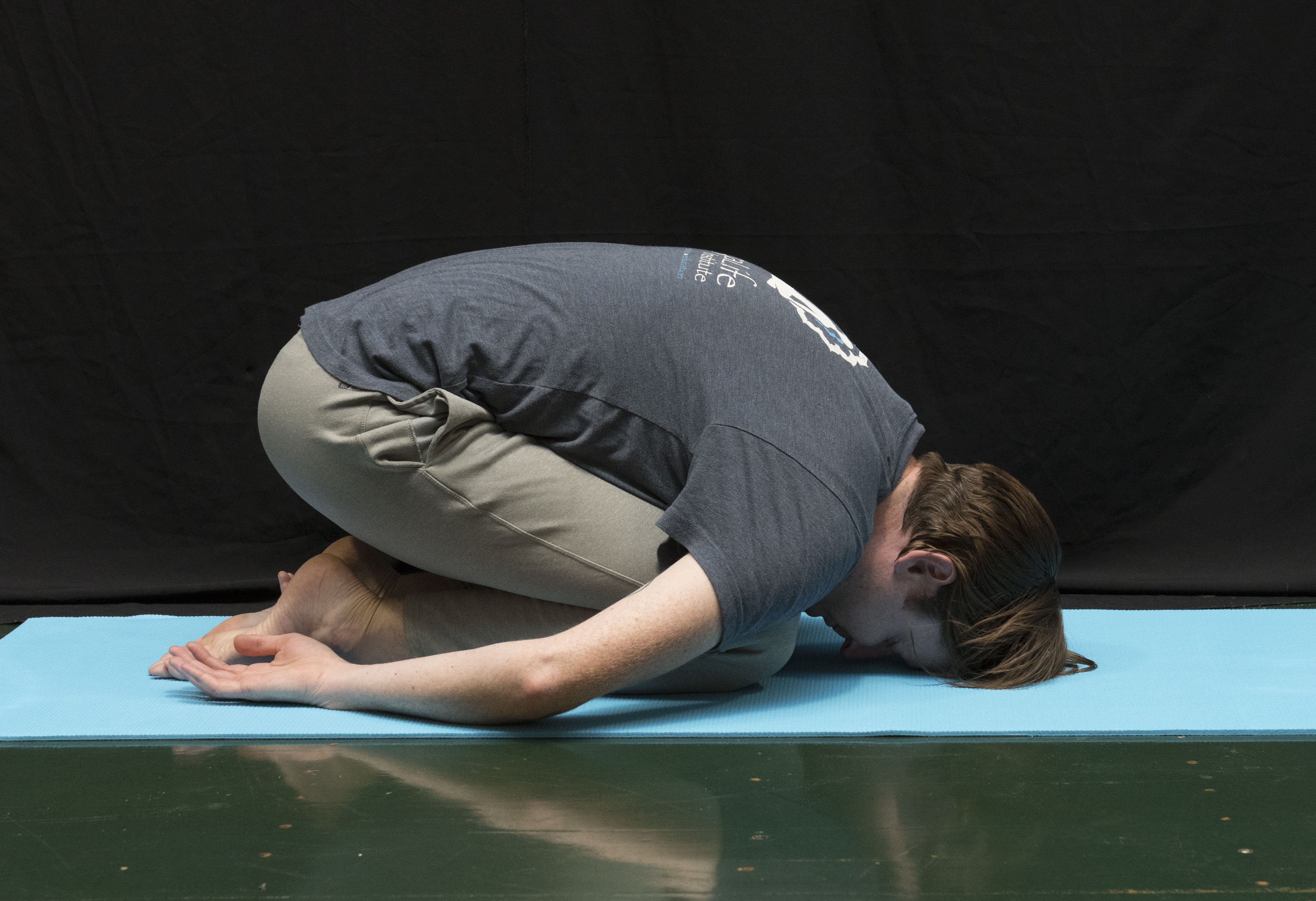By Erin Covey-Smith & Wes Covey
Restorative yoga, (also sometimes called “Yin,” which is a particular school of restorative yoga) is a calming, balancing style of yoga meant to relax, rejuvenate, and replenish both your body and your mind. Increasing numbers of local studios are offering restorative classes, which is a great way to get started under the guidance of a professional instructor. But it is also easy to set yourself up at home and take a few minutes out of your day to re-charge. All you need is a lightly padded surface such as a yoga mat or a rug – though having a pillow or a blanket nearby can be helpful.
Here are some poses to get you started.
Child’s Pose:
Benefits: calms and soothes the body and mind; provides a gentle stretch to the knees and back; some women report the pose helps ease menstrual cramps.
How to do it: from a hands-and-knees posture (known in yoga as Table Pose), simply sink back onto your heels with your torso resting on your thighs. If the weight of your body is uncomfortable for your knees or ankles, you can put a cushion or folded blanket under your knees or between your hips and ankles. If possible, rest your forehead either on the ground or on a block or pillow. Your arms can be folded alongside your body or stretched out in front of you.
How long to hold: anywhere between one and five minutes. The longer you hold the pose, the more benefit you will feel. Move slowly as you come up out of the pose, especially if you have been holding it for a longer period.
Butterfly Pose:
Benefits: provides a nice stretch for the hips and inner legs; can be a great stretch for the back if you fold forward over your feet; assists with digestion.
How to do it: from a seated position, bring the soles of the feet together in front of you, and let your knees sink out to the sides so that your legs form a diamond shape. You can take hold of your feet, knees or ankles. You can simply sit with a straight spine, or fold forward over your feet. If you are upright, your feet should be closer to the body; if you fold over your feet, they should be placed a comfortable distance away from your hips. Some people prefer to sit on a cushion or folded blanket. You may also find it comfortable to place a pillow under each of your knees to provide some support to your legs. Since the key to all restorative poses is allowing your body to completely relax, it’s important that you feel comfortable enough to fully let go.
How long to hold: this pose can be held as long as you like, but it’s best for a beginner to start with one or two minutes.
Legs Up the Wall Pose:
Benefits: An inversion is any pose in which your feet are above your head. These poses reverse the blood flow and help with circulation. They encourage more blood to flow to the brain. Legs up the Wall pose cools and calms the body and relaxes the mind. It also releases pressure on the ankles and feet.
How to do it: Sit on the floor facing a wall. Scoot your hips toward the wall, lie back, and rest your legs up the wall with your heels resting against it. Some people may want their hips closer to or further away from the wall. You really can’t do it wrong. Some people find it comfortable to position a cushion under their hips. You can also put a rolled up towel under your neck for additional support.
How long to hold: Start with two or three minutes; feel free to stay as long as you like.
Ahhh. . . refreshed and renewed, you can now face your day with a sense of peace, calm and positive energy!











